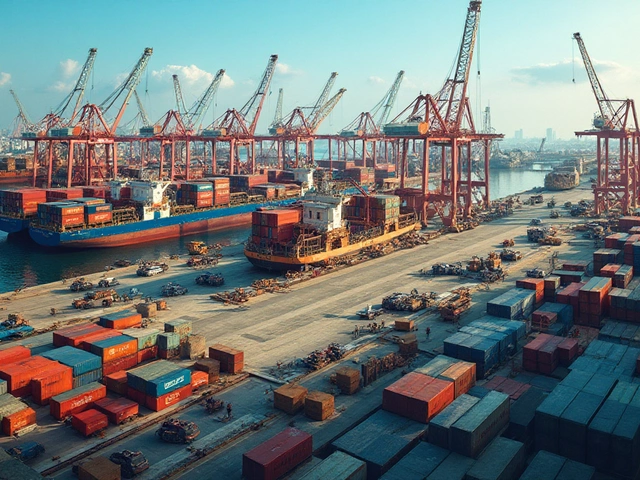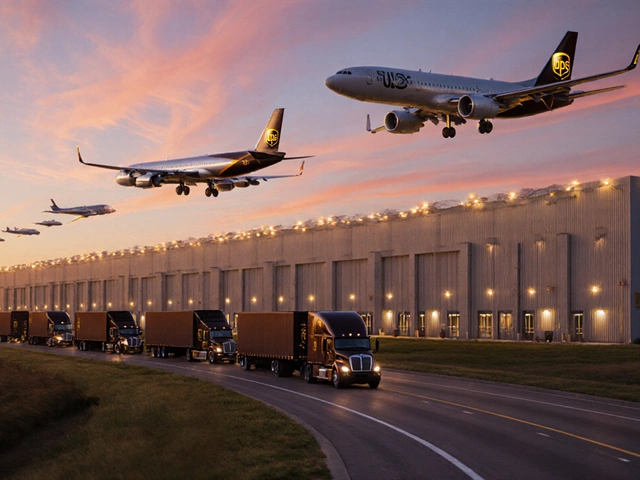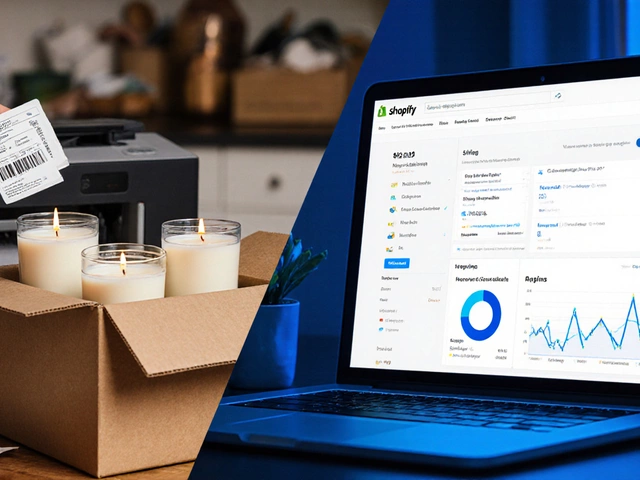Picture this: you’re waiting on a package—maybe it’s birthday sneakers, maybe an urgent business part. Time ticks by, and you keep refreshing that tracker. Ever wondered why some packages appear overnight, while others crawl across the country at a snail’s pace? There’s a lot that goes on between sending and receiving, and the world of courier delivery times is more intricate than most people realize.
Factors That Affect Courier Delivery Times
Let’s get one thing out of the way: there’s no magic number or one-size-fits-all answer for how long a courier takes to deliver. The speed depends on a pile of factors. First up is distance—local deliveries move quicker than cross-country hauls. A parcel within your city? That could show up the same day or within 24 hours. Shipping across states, especially rural areas? That clocks up extra days. Then there’s the type of service you pick. A standard ground service is cheaper, but don’t hold your breath; think two to five business days domestically, sometimes longer if you’re shipping “economy” or “budget” service. If you shell out for express delivery, you could see one- to two-day shipping windows, even overnight—assuming you order early enough and the courier handles that speed in your region.
But here’s where things get complicated: time of year can throw a big wrench in estimates. Ever tried sending something in mid-December or around major holidays? Shipping traffic triples, and even major couriers struggle to keep up, leading to delays. Natural disasters, weather, strikes, or customs holdups (for international deliveries) can also spoil the quickest delivery timelines. Don’t be surprised if a blizzard or flood halts packages en route—even the best courier can’t control the weather. It’s also good to know that weekday business hours count here. Couriers usually don’t pick up or deliver on Sundays or public holidays unless you’ve paid for a super-premium service.
Another factor you might not consider is what you’re sending. Dangerous goods, oversized parcels, or restricted items go through more checks and paperwork, which stretches the clock. Mistyped address? Expect a delay, since rerouting adds handling steps. Even your location changes the math—remote towns, islands, and rural zip codes take extra time, while convenient city hubs get the speediest treatment.
Take a quick look at how various factors stack up in the table below:
| Factor | Typical Impact on Delivery Time |
|---|---|
| Distance | Same-day (local), 1-7 days (domestic), 2-12 days (international) |
| Service Level | Overnight/Express (1-2 days), Standard (2-5 days), Economy (5-8 days) |
| Weather/Natural Events | Delays of 1-5 days possible |
| Holiday Season | Delays of 1-7 days common |
| Parcel Restrictions | +1-3 days (hazardous/oversized) |
| Rural/Hard-to-reach Areas | +1-4 days |
Do these numbers look familiar? If not, you probably haven’t had the misfortune of living on an island or mailing something on Black Friday.
Standard, Express, and International: Breaking Down Delivery Service Types
Let’s talk actual courier service types, because this is where the guessing game ends and the specifics begin. Your classic “standard” service? That’s usually the slowest option, so if you’re price-sensitive and not in a hurry, this one’s for you. For most US couriers like FedEx, UPS, DHL, and the Postal Service, “standard” means around three to five business days for domestic packages. Big cities sometimes get a boost—two days isn’t unusual—but rural spots lean closer to the upper end.
Express and overnight delivery change the game. Pay extra, and you often get guaranteed delivery: same-day, next-day, or two-day arrival, depending on the hour you book and the destination. These aren’t empty promises—major companies use flight networks, local couriers, and tightly scheduled truck routes to keep those promises. Miss the booking cut-off time, though (usually in the late afternoon), and your package might slip to the next available day.
International couriers? Now things get deliciously complicated. “Express” overseas can mean next-day between big business hubs—like New York to London or LA to Toronto. But if your package needs to pass customs, fly a few planes, and trek rural roads, 3-12 days is typical. Customs clearance alone can tack on unpredictable extra hours or even days, depending on the country, inspection type, and whether your paperwork is flawless. Even within Europe, shortcuts aren’t always possible—cross-border regulations and weekend closures mean a one-day difference is almost guaranteed.
Here’s a rundown you can actually use when shipping:
- Domestic Standard: 2-5 business days
- Domestic Express: 1-2 business days
- Same-Day/Local: Within hours if booked early, or by end-of-day
- International Standard: 4-12 business days
- International Express: 1-3 business days between major hubs, more for remote areas
Certain couriers specialize, too. FedEx Express, UPS Next Day Air, and DHL Express have their own planes and prioritized truck networks, which means they rarely miss a deadline. Economical services like USPS First Class or UPS Ground take the “slow but steady” route, mixing in trains, trucks, and even local partners abroad.
One quirky fact: Not every “express” means lightning speed. Some budget carriers rebrand their economy services with fancy names, so always check the fine print. And hybrid solutions (shipping that starts with a courier and ends with your local post office) can sometimes add a hidden day or two.
Tracking Packages: What Really Happens After You Place an Order?
Ever watched your package seemingly teleport from city to city? A modern tracking link is a marvel of logistics, but it’s only as good as the data fed into it. As soon as your item gets picked up, it’s scanned and logged—now the journey begins. Big warehouses sort parcels automatically using vast conveyor belts and barcode scanners, shuffling boxes to the correct trucks or planes. The first scan is usually “accepted” or “received.” Every major checkpoint along the way? Expect a new status update: “in transit,” “arrived at facility,” “out for delivery.” It all sounds simple, but stuff can get stuck in limbo too—a package doesn’t always get scanned at every single transfer, so sometimes your status won’t update for hours, occasionally even a full day.
On the other hand, international deliveries add several extra tracking hoops. Once a package leaves the sending country, you may see statuses like “departed international hub” or “cleared customs.” Occasionally, there’s radio silence as the shipment crosses the ocean or waits in customs. Different countries use different tracking systems, so you might get a new tracking number once your item switches couriers overseas—a notorious pain point for anxious package watchers.
Certain couriers offer push notifications or text alerts, which can save you obsessive refreshing. But beware the dreaded “delivery exception” status. This means your item couldn’t be delivered—for any number of reasons, like the recipient not being home, security issues in certain neighborhoods, address errors, or weather mishaps. The best move? If your package status stalls for 48 hours or the tracking shows “exception,” get in touch with customer support. They can often nudge a stalled package or at least tell you what’s going on behind the scenes.
A little-known tip: Signing up for a courier’s loyalty program (like FedEx Delivery Manager or UPS My Choice) gives you more control, from changing delivery locations mid-journey to scheduling time windows for drop-off. Handy if you have a busy life and want a package on your terms.
Tips for Faster, Smoother Courier Deliveries
Alright, now for the practical wisdom. If you want your package delivered faster—or without hiccups—don’t just hope for the best. Here’s what I always tell friends and family:
- Double-check the address. One typo, missing apartment number, or swapped digit can send your package on a detour for days.
- Pick the right service for your needs. Don’t spring for overnight if standard will do. But if it’s urgent, don’t cheap out.
- Avoid shipping during major holidays whenever you can. Black Friday, Cyber Monday, and any national holiday create monster backlogs. If you must, plan for delays.
- If possible, use “signature required” for valuable or time-sensitive deliveries—you’ll avoid porch theft and get proof of handover.
- Give your phone number and email. Couriers use these to reach you fast if there’s an address snafu.
- For international shipments, fill customs forms carefully. Missing details can lead to days in limbo at customs.
- Use original packaging and seal boxes tightly. Damaged or loose parcels sometimes get flagged and set aside for inspection, slowing things down.
- Consider delivering to pickup lockers or business addresses. Couriers often drop off at commercial locations and access lockers earlier in the day.
Here’s another secret: if your package is running late, turn on tracking notifications, reach out to support promptly, and have your tracking number handy. Don’t just wait and hope. The sooner you ask, the likelier your inquiry gets noticed (especially with small or regional couriers).
Finally, if speed is life or you have a serial online shopping habit, compare courier networks in your area. Some couriers excel at city routes but struggle in remote places, and the gap can be a full day or two. Word-of-mouth helps too—big retailers often reveal which couriers are most reliable in your region. And don’t fall for every “guaranteed delivery” tagline running across checkout screens; always look for a money-back or late-delivery guarantee in the fine print.
Courier delivery speed doesn’t have to be a total mystery. It’s all about the details—service level, distance, timing, and above all, choosing the right provider for your specific needs. Next time you click “order,” you’ll know exactly what to expect and a few tricks to speed things up the next time you need that package, pronto.





